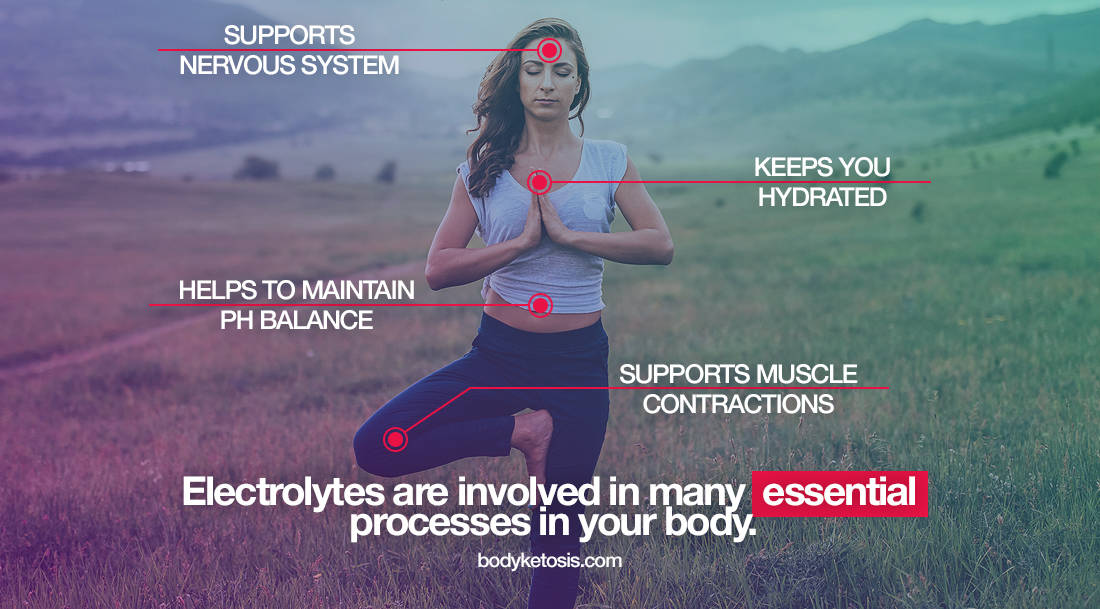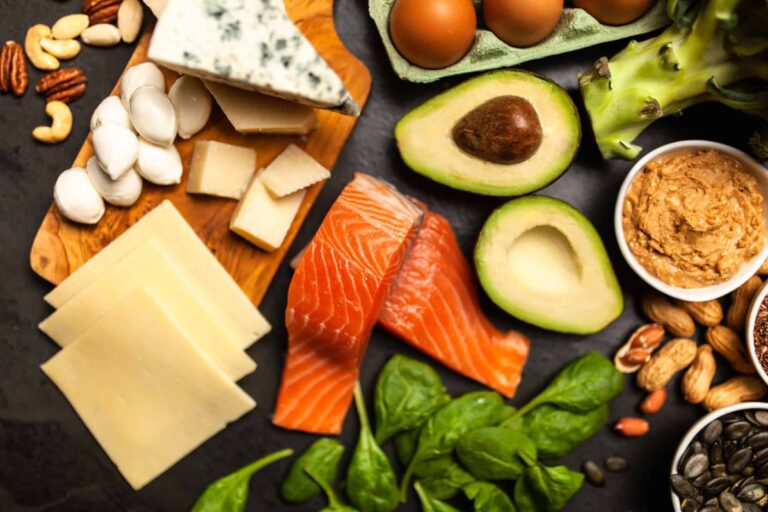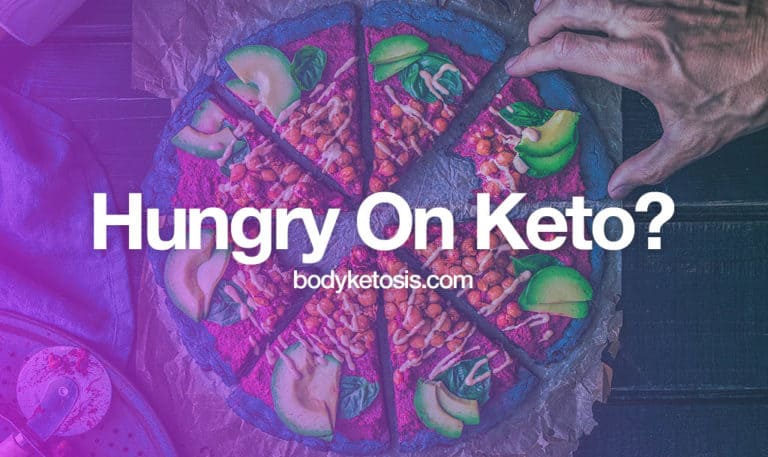Intermittent Fasting: The Definitive Guide (2024)

Intermittent fasting (IF) is one of the latest diet trends to hit the mainstream; however, this practice is really nothing new.
Humans have been fasting throughout most of history, mostly for religious but also for health reasons.
Science has only recently started to catch up with the health benefits of fasting.
So, you are saying that I should just fast and DHL will bring my six-pack and superpowers by tomorrow morning, right?

Well, probably not. There’s more than meets the eye when it comes to IF. That’s why, in this in-depth guide, I will teach you:
- What IF really is and isn’t,
- what happens to your body during it (the timeline),
- and beginners guide to get started.
Let’s “fast” in.
What is Intermittent Fasting?
Definition of intermittent fasting
Intermittent fasting (IF), also called intermittent energy restriction, is an umbrella term for a range of dietary practices that involve defined periods of fasting and feeding.

The most basic definition of intermittent fasting is willingly abstaining from calories for a defined period of time. IF can be considered a variation of our normal eating patterns.(2)
Isn’t fasting the same as reducing calories?
Fasting can involve reducing calories, but it is not the same as controlled calorie restriction. There are no caloric guidelines for fasting.

- Calorie restriction is achieved mainly by reducing portion size and limiting calorically dense foods.
- Fasting, on the other hand, is done by controlling when you eat and not so much what you eat and how much you eat.
Why is IF So Popular?
Recent keto diet popularity statistics show that intermittent fasting is slightly more popular (8%) than the ketogenic diet (5%).
Various forms of intermittent fasting had been practiced across the globe for ages, but only recently has it gained widespread attention. Why is this so?
Popularization in the media
- Back in 2007, Brad Pilon, who is a fasting expert, published Eat Stop Eat, and many enthusiasts soon followed suit with their own material.
- The biggest surge in popularity for IF happened around 2012 when BBC broadcast journalist Dr. Michael Mosley’s released his TV documentary Eat Fast, Live Longer as well as his book The Fast Diet.
- Around the same time, author Kate Harrison’s published a book based on her own experiences titled The 5:2 Diet. The trend soon caught the attention of the scientific and medical communities (1), which labeled the growing trend as “the next big weight-loss fad.”
- However, the popularity of IF only continued to grow, especially with the publication of Dr. Jason Fung’s 2016 bestseller The Obesity Code.
- The “Blue Zones” book came out in 2008 showing the top 9 cities around the world that had on average the highest amount of centenarians. Valter Longo at USC has recently made headlines with his fasting-mimicking diet and how it reduces the burden of aging. (3)
Commercialization by companies
Another possible explanation why IF has hit the mainstream, particularly over the past two years, may have to do with its commercialization, at least according to Bloomberg (4).
You’d think that there’s no way you could sell products for a diet regimen that involves mimicking a state of fasting, or not eating (except water). However, we’ve witnessed products specifically targeted at those who fast regularly hit the dieting market, and these products include:
- Diet plans and coaching
- Electrolyte supplements
- Appetite suppressants
- Books
- Weight-loss shakes
- Full meal packages
- IF apps
These companies have been heavily criticized for offering expensive products that are not backed by scientific evidence, especially in regard to IF.
Types of Intermittent Fasting
There are many variations to intermittent fasting, with the most popular being time-restricted feeding (TRF) and whole-day fasting.

- TRF involves eating only during certain times of the day and fasting for long stretches within one day. For example: One will fast until 12 PM and eat until 8 PM. This is called 16:8. Where for 16 hours you fast, and for 8 hours you eat.
- Whole day fasting is going without food and caloric drink for 24-72 hours.
Both types can further be categorized into water fasts (with water) and dry fasts (without water) – the latter is not recommended since it will lead to dehydration and is usually only practiced for religious purposes.
TRF (time-restricted feeding)
- The 16:8 fast – The most well-known IF method is the 16:8 fast. Originally popularized by Martin Berkhan of Leangains, the 16:8 fast is one of the easiest and most efficient fasting methods for weight loss. The numbers in the name stand for hours spent fasting and the hours of the feeding period (5,6).
- The 20:4 fast – Also known as the warrior diet, the 20:4 fast was developed by Ori Hofmekler. On this diet, you fast for around 20 hours during which time you perform high-intensity workout and eat food within 4 hours. The feeding window may include two smaller meals or one large feast. This should not be done without proper medical supervision or proper planning and education as dehydration and hypoglycemia (low blood sugars) can be deadly. (7)
- OMAD – The One Meal a Day Diet (OMAD) involves fasting for 21-32 hours and eating for 1-2 hours each day. This method is great for fat loss but not so much for muscle building since the time for protein intake is very limited. (8, 9)
- The 5:2 Diet – The fasting method popularized by Michael Mosley, the 5:2 diet involves eating normally for five days of the week with no restrictions, and then restricting calories to 500-600 per day for the other two days of the week. (10)
- Fat fasting – As the name implies, fat fasting involves getting your calories only from fat for a period of time. This is to try and mimick your body’s state of fasting by going into ketosis. Bulletproof coffee is a popular drink taken during fat fasts. (11)
- Dry fasting – Dry fasting involves total abstinence from all food and drink for a period of time, usually less than 24 hours. Fasting for Ramadan is the most well-known dry fast. (12).
Whole-day fasting
- 24-hour fast – Popularized by Brad Pilon, author of Eat Stop Eat, the 24-hour fast, as described in said book, consists of fasting for 24 hours twice a week and eating healthful foods for the other five days. (13)
- 36-hour fast – Fasting for one and a half day is difficult for most people, but it is definitely doable and safe when done correctly. In the past when food was scarce, not eating for this time frame was a normal occurrence. (14)
- 48-hour fast – Fasting for two days leads to major changes in metabolism and cell functioning. It can induce most people to go into ketosis, or fat-burning metabolism and lead to cell recycling and removing dead or damaged cells. (15)
- ADF (alternate day fasting) – Fasting for one day and eating the next describes ADF. It is recommended to eat fewer calories on feeding days to promote weight loss. (16)
- Extended fasting – Extended fasting is abstaining from food for up to three days. Little is known about the effects of prolonged fasting on humans, but animal studies found it can have profound effects on health. (17)
The Fasting Timeline
According to an article published recently in the journal Obesity, almost all fasting benefits are due to a “metabolic switch” that takes place 12-36 hours upon initiating fasting (18). But what exactly does this metabolic switch entail and when can one expect to gain fasting benefits? Chart source (*).

- 4-8 hours – After about 8 hours of fasting, which happens on a daily basis while you sleep for that long, the body has used up some of its glucose reserves (depending on your age, gender and body size) If you are on the leaner side, your body may go into “gluconeogenesis,” which simply means to make new glucose.
- 8-72 hours – Simultaneously, there is a dramatic drop in insulin levels, which soon signals fat cells to release fatty acids. Some of these fatty acids reach the liver to be converted into ketones (5). The longer you remain in a fasted state, the more ketones are being produced.
- 72 hours and onward – After 3 days of not eating any calories, the body enters “starvation mode” This means that metabolism is slowed down and the body will start breaking down its own fat cells for energy.If you don’t have a lot of fat reserves, the energy can come from breaking down muscle proteins. First, from dead intestinal cells and pancreas secretions and, later, from the muscle (1,20). Chart source (*).

Fasting for short periods of fasting intermittently triggers a host of adaptive responses that are good for health. These include things like increased cell renewal, activation of longevity genes, and increases in human growth hormone (21,22,23). However, fasting that becomes starvation can cause harm.
IF and Weight Loss
Most people nowadays are interested in intermittent fasting as a way to lose weight. And they’re not wrong for doing so. Studies found that both long-term and short-term fasts produce weight loss (24,25).
What’s really great is that compared to low-calorie diets, fasting does not lead to muscle wasting and leads to over 7 pounds more compared to low-calorie diets (26).

Researchers believe fasting produces weight loss mostly from fat burning through the following mechanisms (27):
- It lowers insulin levels – Insulin is used to make cells grow. It is a key driver of weight gain by promoting fat storage and curbing fat burning in cells. Lower insulin during fasting happens as a result of drops in blood glucose, glycogen depletion, and weight loss. (28) Chart source (*).

- It makes you eat less – Ideally, you should end up eating less within a 24-hour period when fasting is included. Fasting helps achieve lower calorie intake by limiting the amount of time you eat in a day. However, some people end up bingeing during their feeding windows, and this can prevent weight loss. (29)
- It increases human growth hormone (HGH) – HGH is a hormone produced by the pituitary gland, a small gland in the brain. This hormone increases the breakdown of fat, counteracts the effects of insulin, and stimulates protein production (good news for muscle building). Fasting is able to increase this hormone significantly. (30) Chart source (*).

- It kickstarts ketosis – Ketosis is often referred to as fat-burning mode. When you burn carbs for fuel, you produce glucose. When you burn fat for fuel, you produce ketones. During fasting, most ketones produced come from stored fat being used for energy. So, getting into ketosis regularly through fasts can boost your fat-burning potential. (31)
Fasting also improves insulin sensitivity and improves blood glucose levels – both important when it comes to weight maintenance. (32)
IF and Keto Diet
Intermittent fasting and the keto diet have one major thing in common – they can both get you into ketosis. Both dietary strategies induce this metabolic state, and for this and other reasons, many like to combine the keto diet with IF to improve their outcomes. In fact, Jason Fung, author of The Obesity Code, recommends the keto diet as a foundation for fasting.

When IF is practiced alongside a keto diet, it helps speed up transitioning into ketosis. That’s because going without food depletes liver glycogen sooner as does eating a diet low in carbohydrates, and this is an important precursor to ketosis. (31)
Some keto dieters also find that IF is much easier when practiced with a keto diet.
“The brain will rely less on glucose for energy when in a state of nutritional ketosis. Therefore, the transition into a fasted (ketogenic) state during the day eventually becomes seamless after eating low-carb or ketogenic for a few weeks (32).” – Dominic D’Agostino, associate professor at the University of South Florida in Tampa and leading researcher in the field of Ketogenic diets and Cancer.
- In other words, you won’t feel hungry, dizzy, and weak when fasting on a keto diet since your body is already adjusted to using fat for fuel and is relying less on glucose. This is because the state of ketosis mimicks the state of fasting in your body.
- This is especially true if you’ve been on a keto diet for at least 4 weeks, which is the minimum time it takes to become keto-adapted – able to successfully use fat for fuel. (33)
However, if you’re not keto-adapted, IF may lead to worse keto flu and other adverse symptoms (34). On the bright side, combining the two may lead to greater weight loss since fasting makes you eat less during the day while keto supports fat burning.
Benefits
In case you need more convincing to try out IF, consider the following science-backed benefits linked to this dieting method:
- Weight loss – Low-calorie diets without exercise are not effective for weight loss because they reduce metabolic rate and lead to muscle wasting (35). IF, on the other hand, is great for weight loss because it leads to eating fewer calories, improved metabolic functioning, and enhanced fat burning, all the while sparing muscle tissue and maintain normal metabolic rate (36).
- Longevity – Fasting boost autophagy, which is essentially your cells’ recycling system that helps eliminate dysfunctional cell components (37). With fewer damaged cell components, cells tend to function better and this can help you live longer.
- Metabolic health – Fasting lowers blood glucose, insulin, and lipids while upregulating fat oxidation. This, in turn, leads to better metabolic health by increasing weight loss, insulin sensitivity, and the body’s ability to use energy efficiently. (31)
- Inflammation – Fasting reduces inflammation according to studies done in rheumatoid arthritis (RA) patients (38). The anti-inflammatory benefits of fasting can also help with conditions like diabetes, obesity, and depression.
- Hypertension – Studies also show that 13 days of water-only fasting leads to drops in systolic blood pressure (BP) below 120 in around 80% of people with borderline hypertension (38). However, we don’t recommend fasts this long without medical supervision.
- Cancer – Researchers believe fasting may protect from cancer by reducing cell and DNA damage and by enhancing the death of pre-cancerous cells (38). It works against cancer through its effects on insulin, glucose, ketones, and specific hormones.
- Convenience – IF allows you to think less about food by spending less time eating it. It’s also easy to follow and does not cost you money.
Side Effects
A systematic review involving 768 cases of patients water fasting mostly for 2 days found that most (65%) experienced only mild side effects and there are no reported deaths (39). The side effects these patients experience included:
- Fatigue
- Insomnia
- Headache
- Digestive issues
- Indigestion
- Back pain
- Hypertension
- Dizziness

Other common fasting side effects are unrelenting hunger, constipation, and irritability. Most of these side effects are due to dehydration, electrolyte changes, and low blood glucose levels (40). Some, like insomnia, are due to the stress of fasting and others, like stomach pain and indigestion, are due to high stomach acid levels.
- More serious side effects of fasting like hair loss, water retention, menstrual irregularity, nutrient deficiencies, metabolic acidosis, and organ damage are reported in only extended fasts lasting several weeks (41).
- Another serious side effect of extreme fasting and that you should be aware of is refeeding syndrome. It’s a result of a shift in fluids and electrolytes that happen when someone who is starved suddenly eats too much food. Luckily, this happens only with prolonged fasting of 10 days and more and rarely with normal IF (42).
IF is NOT for Everyone
Who should avoid IF
Wilhelmi de Toledo, a physician and fasting expert who is also the founder of the Medical Association for Fasting and Nutrition, made the first peer-reviewed fasting guidelines in English together with her colleagues (43).

The guidelines specify that people with the following should not fast:
- Recent unintentional weight loss and muscle wasting due to illness
- History of anorexia nervosa and other eating disorders or disordered eating
- Untreated hyperthyroidism
- Problems with blood supply to the brain and dementia
- Advanced liver or kidney diseases
- Pregnancy and nursing
- Type 2 Diabetes on glucose lowering medications (without medical supervision)
Furthermore, the guidelines specify that those with the following should fast only under medical supervision:
- Type 1 diabetes
- Addictions
- Psychotic disorders
- Severe coronary artery disease
- Retinal detachment
- Peptic ulcers
- Cancer
Besides that, if you’re taking the following medication, your doctor may need to make dose adjustments when you fast:
- Non-steroidal anti-inflammatory drugs (NSAIDs)
- Systemic corticoids
- Antihypertensives (especially beta-blockers and diuretics)
- Glucose lowering medications for diabetes
- Contraceptives
- Anti-coagulants
- Psychotropics (especially neuroleptics and lithium)
- Anticonvulsants.
It’s different for women
If you’re a relatively healthy woman who’s not pregnant or breastfeeding, you can definitely fast. However, if you’re underweight, pregnant, or breastfeeding, then this may not be a good time to fast.
- Studies show that being underweight is just as bad for health as being overweight (44). Being underweight can also lead to fertility problems in women, especially when combined with fasting. Since fasting is known to lead to weight loss, it is not a good idea to do fasting when you are already underweight.
- Fasting during pregnancy can starve both the mother and baby and increases a baby’s exposure to stress hormones according to one systematic review. Not to mention, you have higher protein and calorie needs while pregnant. This is not recommended. (45)
- Fasting during breastfeeding may put a woman at risk of ketoacidosis (46). That’s because milk production is an energy-demanding process, and the body will break down fat stores at a fast rate to meet these energy demands. Breast-feeding burns about ~500 extra calories ahead, which you need to produce enough milk. Do not fast while breast-feeding. (47)
Who should try it?
If you’re relatively healthy but overweight, you can try IF to lose weight and improve other aspects of your health. You may want to start out with fasting for 12 hours first and then increasing your fasting time in a stepwise fashion.
If you’re a normal weight adult, you can use IF to boost longevity, your health, and your well-being. In this case, it is essential that you eat enough calories to sustain your current weight during your feeding window to prevent unnecessary weight loss and reap the benefits of fasting.
Besides weight loss, reasons to try fasting include improved ketosis, better metabolic health, lower risk of cancer, better brain functioning, and improved cardiovascular health. (3)
Can You Eat and Drink During IF?
Can you eat during IF?
IF is defined as someone willingly abstaining from food and drink during a specified time window that contain calories. Thus, drinks with no calories are allowed during the fasting window.
All food contains calories, so you cannot eat anything during your fasting windows. You can, however, consume non-nutritive supplements and liquids.
The only time you can and should eat during IF is within the defined feeding windows (like the 8 hour window during the 16:8 method) You can eat anything you want during this time but opting for nutrient-dense and healthful foods is recommended in order to get the most health benefits out of fasting
If your goal is weight loss, go for foods that help lower your calorie intake. Good examples are high-fiber vegetables, like cucumbers, celery, salads, broccoli, jicama, bell peppers, good fats like avocados, olives, nuts and protein-rich foods like eggs, fish and grass fed meats.
Can you drink during IF?
Dry fasts, like Ramadan, forbids drinking any fluids within the duration of the fast. All other fasting, on the other hand, involves adequate intake of zero-calorie fluids. These fluids include: plain water, fizzy mineral water, regular black coffee (sugar-free) and tea (sugar-free).

Juices, shakes, soups, and other calorie-containing liquids will break your fast. If you’re worried about electrolyte imbalances during fasting, consider zero-calorie electrolyte supplements or try drinking water with a bit of salt.
Adequate hydration during IF will make the fast safer and more tolerable. It will also keep your energy levels up. “Even mild dehydration can drain your energy and make you tired” according to the Mayo Clinic (48). You are already moderately dehydrated if you are thirsty. (49) The recommended daily fluid intake to prevent dehydration is:
- 15.5 cups (3.7 liters) for men
- 11.5 cups (2.7 liters) for women
The most common is to take your body weight in pounds and divide into 2 to get the amount of ounces you should be drinking per day. (50)
Can you take supplements during IF?
You can, but you don’t need to take supplements to get the fasting benefits.
There can be a time and place for them, and if done correctly, you can take supplements and fast successfully. In fact, there is one case reported in the medical literature where a man lost a significant amount of weight fasting while taking multivitamins (51).
Most multivitamins and other supplements contain a small number of calories, around 5 kcal per serving. Some contain sweeteners like fructose, and you may want avoid those. Make sure to read the label and know that the minuscule calories found in most supplements are unlikely to adversely affect your fast.
If your main fasting goal is ketosis, you may also use MCT supplements. The body prefers using medium-chain triglycerides (MCTs) for ketone production and they were found to promote weight loss (52).
How to Get Started
Most of us are fairly accustomed to eating every day, several times a day. As a result, this habit is hardwired in our brain, and the body will not be happy when you don’t give it its highly anticipated meal.
In fact, studies show it will respond with a surge in stress hormones when deprived (53). But the body can also adapt, especially if you prepare ahead. Here is how to do exactly that for easier fasting.
- Start gently – If you’re not used to fasting, then go with a 12:12 fast first before experimenting with longer fasts. This fast is probably the easiest and safest to follow. It essentially involves having your last meal let’s say around 6 PM, and your next meal around 6AM. If you already do this, great! Go for 14:10, eating from 8 AM to 6 PM and continue to cut back on the hours eating during the day. This is the safest and easiest on the body.
- Prepare ahead – Have a nourishing meal and plenty of rest the day before your fast. When we say nourishing, we mean a meal that contains adequate calories from fat, protein, and carbohydrates as well as fiber and micronutrients. A good example is a tuna and mayo salad with mixed greens, chicken breast over salad, or a hearty lentil and vegetable soup.
- Drink plenty of water – Have a bottle of water with you at all times. Avoid diuretics like too much caffeine and alcohol. However, if you’re on a keto diet protocol, then a cup of Bulletproof coffee is perfectly acceptable and may help keep your energy levels up.
- Stop if you’re unwell – A bit of hunger and fatigue are normal during your first fast. However, if you’re disoriented, unable to walk, feel shaky and dizzy, nauseated, have a headache or extremely irritable – it’s a good idea to break your fast.
- Practice mindfulness – Not eating anything pretty much goes against our survival instincts, and this can easily put you in panic mode. Dr. de Toledo recommends meditation and relaxation techniques as this will be a mind over matter kind of situation (54).
- Exercise with caution – Exercising will keep your cardiovascular system healthy during long fasts and help preserve muscle strength. It also helps bring enough oxygen to tissue, keeps you warm, enhances the flow of lymph, and boosts well-being. It is essential that you do this while hydrated and is best done in the morning to avoid having symptomatic low blood sugars during the day.
- Break the fast – No matter if you’re following the 5:2 diet, the 16:8 fast, or whole-day water fast, you should break your fast with an easily digestible first meal followed by a meal of your choice later during your feeding window.
How to Break a Fast?
All fasts need a gentle end. As outlined in de Toledo’s fasting guideline, cooked or raw fruit and potato soup are typically served to break a long fast (55). Of course, if you’re on a keto diet, then bone broth or cauliflower soup or a fresh avocado and olives are better alternatives.
How gentle you should go depends on how long your fast lasted.
- If you’ve fasted for two days straight, then go for vegetarian food like soups, olives, nuts and kefir are great options. Eat up to 800 calories during the first day of your fast break.
- If you’ve fasted only for 8-16 hours, then break your fast with one vegetarian meal containing 300-400 calories and wait for a couple of hours before having your next meal.
- Adequate fluid and fiber intake is also recommended to make the transition to eating safe and easy (56). This will also help with bowel movements.
The main reason why breaking fasts gently is recommended so that your digestive tract can slowly read just to having food intake again. Our bodies are used to eating food at the same time each day, and changes in our feeding schedule mean the body will have to adjust slowly to changes in feeding time.
Misconceptions
#1. Fasting is starvation
As Dr. Jason Fung puts in one of his blogs, the difference between fasting and starvation is a matter of willingness, i.e., if a person is willingly or unwillingly abstaining from food. (57).
Furthermore, fasting should entail “undernutrition without malnutrition” to yield benefits; otherwise, it can be labeled starvation (58).
#2. Isn’t it unhealthy to skip breakfast?
According to an opinion piece published in the 2014 issue of TheFrontiers in Public Health, “breakfast is just another meal, …. prolongation of overnight fast, which depends not only on timing of breakfast but also on timing of the last meal of the day, can be beneficial (59).”
This piece as based on a literature review showing that there are no negative effects of skipping breakfast.
#3. Will fasting cause muscle loss?
Only if you don’t eat adequate calories and protein during fast breaks and are highly inactive.
Otherwise, evidence shows that fasting does not cause muscle wasting because it leads to ketosis, which is known to help preserve muscle mass and muscle functioning (60,61). This is especially true for overweight and normal weight individuals.
#4. Will fasting slow down my metabolism?
The rate of your metabolism, formally known as basal metabolic rate (BMR), slows down only during starvation.
Fasting, on the other hand, does not lead to drops in BMR, at least according to a study on 34 resistance-trained men who followed the 16:8 fast for 8 weeks (63).
#5. But aren’t we supposed to eat every 3 hours?
Eating small meals every couple of hours is said to help you eat less and burn more calories.
However, a study published in Obesity found that eating 6 small meals a day did not increase fat burning and may even increase hunger and desire to eat (64).
Eating fewer meals and keeping track of your daily calorie intake may be more effective.
#6. This is crazy, if I don’t eat for 24 hours, I’d die
As already explained, not eating makes your brain signal that you’re starving when you’re not. This leads to a surge in stress hormones like cortisol, which can further leave you feeling panicky.
Keep in mind that humans have been fasting since biblical times and that our bodies are perfectly designed to survive short periods of food restriction (24-48 hours). In fact, eating every few hours is new to the human race.
Besides, evidence shows humans can survive without food for up to 2 months (depending on fat stores) and without water only a couple of days (65).
Conclusion
Intermittent Fasting, an ancient practice and modern weight-loss trend, involves willingly abstaining from food and even drink for a short time frame.
The best way (for beginners) to fast intermittently is to start with 12 hour fasts, then 14 and get up to the 16:8 method since it incorporates your overnight fast with your willing abstinence of only a couple of hours the following day.
Fasting this way provides a host of metabolic and adaptive benefits that are outlined in this article.
If you’re considering fasting for weight loss, metabolic health, cardiovascular health, or to manage a chronic disease, make sure to speak to your doctor first and do focus on fluids and being moderate with whichever method you choose.

Alex is the founder of Bodyketosis, an author, low-carb enthusiast, and a recovering chubby guy who reclaimed his health using the ketogenic lifestyle. The need for the keto life began after his aunt and cousin were diagnosed with type 2 diabetes and he was next in line. Through personal experience and extensive scientific research, Alex offers insightful tips for everything keto.


![How to STOP Keto Headache Fast [And Why it Happens]](https://bodyketosis.com/wp-content/uploads/2018/12/keto-headache-1-768x457.jpg)
![The Keto Whoosh Effect Explained [Losing Weight or Fat?]](https://bodyketosis.com/wp-content/uploads/2019/05/what-is-keto-whoosh-effect-768x457.jpg)



